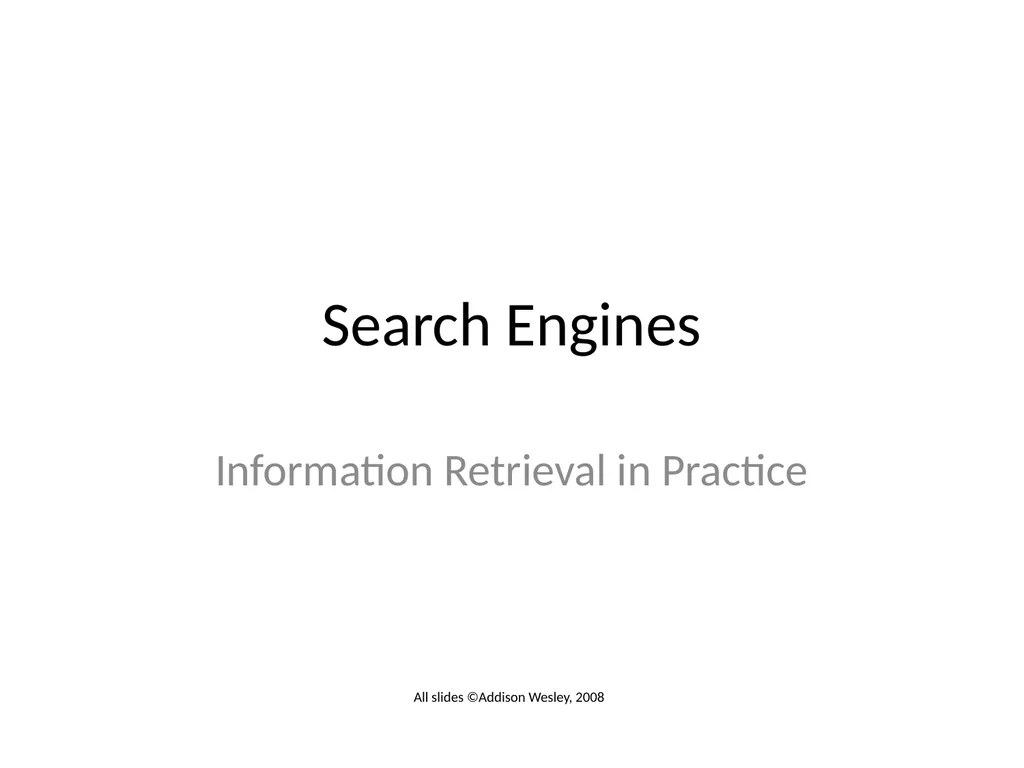
Author : giovanna-bartolotta | Published Date : 2025-08-13
Description: Search Engines Information Retrieval in Practice All slides Addison Wesley, 2008 TexPoint fonts used in EMF. Read the TexPoint manual before you delete this box.: AA Processing Text Converting documents to index terms Why? Matching theDownload Presentation The PPT/PDF document "" is the property of its rightful owner. Permission is granted to download and print the materials on this website for personal, non-commercial use only, and to display it on your personal computer provided you do not modify the materials and that you retain all copyright notices contained in the materials. By downloading content from our website, you accept the terms of this agreement.
Here is the link to download the presentation.
"Search Engines Information Retrieval in Practice"The content belongs to its owner. You may download and print it for personal use, without modification, and keep all copyright notices. By downloading, you agree to these terms.













